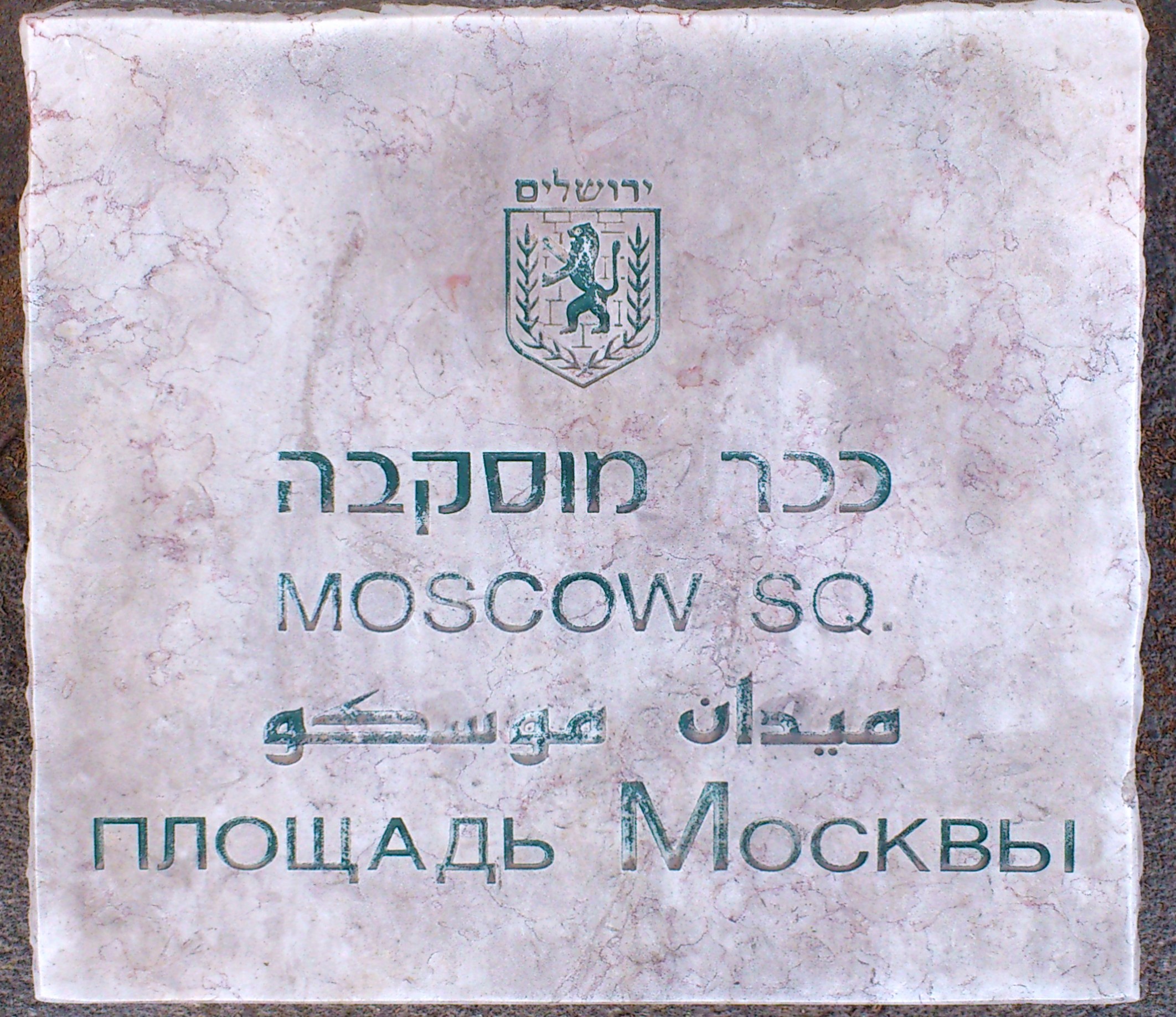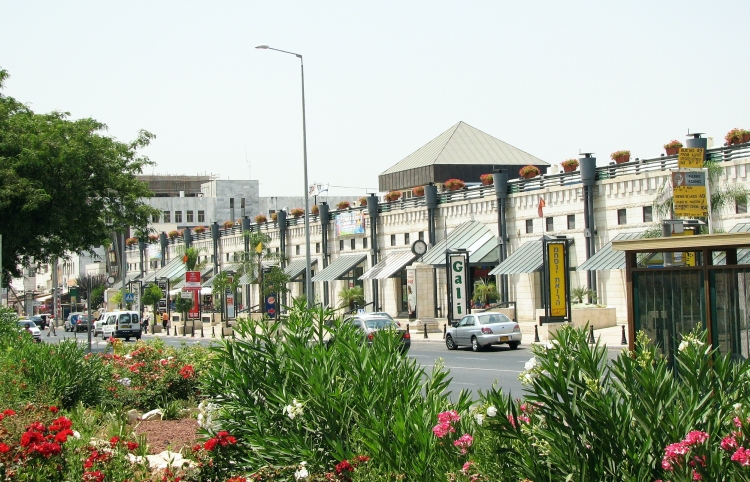|
Bevingrad
From 13–18 May 1948 Jewish forces from the Haganah and Irgun executed Operation Kilshon ("Pitchfork"). Its aim was to capture the Jewish suburbs of Jerusalem, particularly Talbiya in central Jerusalem. Operation At midnight on Friday 14 May, the British declared its civil and military authority in Jerusalem to be at an end. In the morning they evacuated the city in two large convoys, one moved north towards Haifa and the other south towards Bethlehem. The Zionists managed to obtain a schedule of their withdrawal in advance and could thereafter launch the operation almost immediately. The Yishuv forces quickly managed to take control of buildings that the British had nationalized in "Bevingrad" zones. These were heavily fortified security zones that the British had built up around key installations in the city to protect against Irgun attacks. From 1946 to 1948, security zones with huge coils of barbed wire filling the streets and dragon's teeth blocking the incursion of arme ... [...More Info...] [...Related Items...] OR: [Wikipedia] [Google] [Baidu] |
Generali Building
The Generali Building ( he, בניין ג'נרלי, ''Binyan Generali'') is a landmark office and commercial building on Jaffa Road in West Jerusalem. Designed by Marcello Piacentini, chief architect of the Italian Fascist regime, it served as the Jerusalem branch of the Assicurazioni Generali insurance company from 1935 to 1946. In 1946 the British Mandatory government nationalized the building and enclosed it and several other structures at the eastern end of Jaffa Road in a fortified security zone. With the end of the Mandatory government in 1948, the building was taken by the Irgun. Since the establishment of the state, the Generali Building has housed the offices of the Jerusalem District Administration and other government agencies, and street-level stores. The building's neoclassical and modern architecture, and large, rooftop sculpture of a Lion of Saint Mark have made it a prominent landmark in downtown Jerusalem. Location The Generali Building is located in Bar Kochb ... [...More Info...] [...Related Items...] OR: [Wikipedia] [Google] [Baidu] |
Russian Compound
The Russian Compound ( he, מִגְרַשׁ הָרוּסִים, ''Migraš ha-Rusim'', ar, المسكوبية, ''al-Muskubīya'', russian: Русское подворье в Иерусалиме) is one of the oldest districts in central Jerusalem, featuring a large Russian Orthodox church, the Russian-owned Sergei's Courtyard and the premises of the Russian Consulate General in Jerusalem, as well as the site of former pilgrim hostels, some of which are used as Israeli government buildings (such as the Moscovia Detention Centre), and one of which hosts the Museum of Underground Prisoners. The compound was built between 1860 and 1890, with the addition in 1903 of the Nikolai Pilgrims Hospice. It was one of the first structures to be built outside the Old City of Jerusalem. The Russian Compound covers between Jaffa Road, Shivtei Israel Street, and the Street of the Prophets. After 1890 it was closed by a gated wall, thus the name "compound", but it has long since been a free ... [...More Info...] [...Related Items...] OR: [Wikipedia] [Google] [Baidu] |
Ernest Bevin
Ernest Bevin (9 March 1881 – 14 April 1951) was a British statesman, trade union leader, and Labour Party politician. He co-founded and served as General Secretary of the powerful Transport and General Workers' Union in the years 1922–1940, and served as Minister of Labour and National Service in the war-time coalition government. He succeeded in maximising the British labour supply, for both the armed services and domestic industrial production, with a minimum of strikes and disruption. His most important role came as Foreign Secretary in the post-war Labour government, 1945–1951. He gained American financial support, strongly opposed communism, and aided in the creation of NATO. Bevin was also instrumental to the founding of the Information Research Department (IRD), a secret propaganda wing of the UK Foreign Office which specialised in disinformation, anti-communism, and pro-colonial propaganda. Bevin's tenure also saw the end of British rule in India and the in ... [...More Info...] [...Related Items...] OR: [Wikipedia] [Google] [Baidu] |
Volgograd
Volgograd ( rus, Волгогра́д, a=ru-Volgograd.ogg, p=vəɫɡɐˈɡrat), geographical renaming, formerly Tsaritsyn (russian: Цари́цын, Tsarítsyn, label=none; ) (1589–1925), and Stalingrad (russian: Сталингра́д, Stalingrád, label=none; ) (1925–1961), is the largest city and the administrative centre of Volgograd Oblast, Russia. The city lies on the western bank of the Volga, covering an area of , with a population of slightly over 1 million residents. Volgograd is the List of cities and towns in Russia by population, sixteenth-largest city by population size in Russia, the second-largest city of the Southern Federal District, and the Volga#Biggest cities on the shores of the Volga, fourth-largest city on the Volga. The city was founded as the fortress of ''Tsaritsyn'' in 1589. By the nineteenth century, Tsaritsyn had become an important river-port and commercial centre, leading to its population to grow rapidly. In November 1917, at the start of th ... [...More Info...] [...Related Items...] OR: [Wikipedia] [Google] [Baidu] |
Battles And Operations Of The 1948 Arab–Israeli War
Following is a list of battles and operations in the 1948 Palestine war. Operations in the 1947–1948 inter-communal war in Palestine Arms acquisitions Following is a list of operations undertaken by the Yishuv and later Israel to acquire munitions abroad. First stage Following is a list of operations between May 15, 1948—the Arab invasion of Palestine—and June 11, 1948—the first truce of the war. Battles of the Ten Days and second truce Following is a list of battles and operations between the first and second truces of the war—July 8, 1948—July 18, 1948. This period was named "Battles of the Ten Days" in Israel. Also listed are Israeli operations during the second truce. Final stage Following is a list of battles and operations from the second truce of the war up to the 1949 Armistice Agreements. See also * 1947–48 Civil War in Mandatory Palestine * 1948 Arab–Israeli War * Killings and massacres during the 1948 Palestine War Killings and massacr ... [...More Info...] [...Related Items...] OR: [Wikipedia] [Google] [Baidu] |
List Of Battles And Operations In The 1948 Palestine War
Following is a list of battles and operations in the 1948 Palestine war. Operations in the 1947–1948 inter-communal war in Palestine Arms acquisitions Following is a list of operations undertaken by the Yishuv and later Israel to acquire munitions abroad. First stage Following is a list of operations between May 15, 1948—the Arab invasion of Palestine—and June 11, 1948—the first truce of the war. Battles of the Ten Days and second truce Following is a list of battles and operations between the first and second truces of the war—July 8, 1948—July 18, 1948. This period was named "Battles of the Ten Days" in Israel. Also listed are Israeli operations during the second truce. Final stage Following is a list of battles and operations from the second truce of the war up to the 1949 Armistice Agreements. See also * 1947–48 Civil War in Mandatory Palestine * 1948 Arab–Israeli War * Killings and massacres during the 1948 Palestine War Killings and massacres ... [...More Info...] [...Related Items...] OR: [Wikipedia] [Google] [Baidu] |
1948 Arab-Israeli War
Events January * January 1 ** The General Agreement on Tariffs and Trade (GATT) is inaugurated. ** The Constitution of New Jersey (later subject to amendment) goes into effect. ** The railways of Britain are nationalized, to form British Railways. * January 4 – Burma gains its independence from the United Kingdom, becoming an independent republic, named the ''Union of Burma'', with Sao Shwe Thaik as its first President, and U Nu its first Prime Minister. * January 5 ** Warner Brothers shows the first color newsreel (''Tournament of Roses Parade'' and the ''Rose Bowl Game''). ** The first Kinsey Reports, Kinsey Report, ''Sexual Behavior in the Human Male'', is published in the United States. * January 7 – Mantell UFO incident: Kentucky Air National Guard pilot Thomas Mantell crashes while in pursuit of an unidentified flying object. * January 12 – Mahatma Gandhi begins his fast-unto-death in Delhi, to stop communal violence during the Partition of India. * ... [...More Info...] [...Related Items...] OR: [Wikipedia] [Google] [Baidu] |
Greek Colony, Jerusalem
The Greek Colony (, ''HaMoshava HaYevanit'') is a neighborhood in Jerusalem, bordering the German Colony and Katamon. History The lands of the Greek Colony were purchased by wealthy members of the Greek Orthodox community in the early 20th century. Archimandrite Euthymios ( el, Ευθύμιος) of the Church of the Holy Sepulchre encouraged them to establish a neighborhood outside the Old City's overcrowded Christian Quarter. Architect Spyro Houris ( el, Σπύρος Χουρί) designed the first twenty homes and a community center before World War I. Most of the Greek Orthodox residents fled before the 1947–1949 Palestine war in 1948. After the war, apartment blocks were hastily built to accommodate large numbers of Jewish immigrants from Yemen and Morocco. [...More Info...] [...Related Items...] OR: [Wikipedia] [Google] [Baidu] |
Talpiot
Talpiot ( he, תלפיות, literally 'turrets' or 'magnificently built') is an Israeli neighborhood in southeastern Jerusalem, established in 1922 by Zionist pioneers. It was built as a garden suburb on land purchased by the Tel Aviv-based Palestine Land Development Company and other Jewish building societies. Talpiot has become a major commercial center and a hub of nonprofit organizations. The Talpiot industrial zone is one of the largest in the country, with plans for expansion as a center of shopping, entertainment and industry. Etymology The name ''Talpiot'' derives from a verse in Song of Songs 4:4: "Thy neck is like the tower of David, built with turrets". According to rabbinic sources, Talpiot refers to the Temple. It was said to be a compound of the Hebrew words (hill) and (mouths), as in "the hill to which all mouths turn in prayer". History In the 1920s, the Bauhaus architect Richard Kauffmann presented the British Mandate authorities with a plan for Talpiot, w ... [...More Info...] [...Related Items...] OR: [Wikipedia] [Google] [Baidu] |
Baka, Jerusalem
Baka ( ar, بقعه, lit. "Valley"; he, בַּקְעָה) is a neighborhood in southern Jerusalem. The official name is Geulim, which is mainly used on road signs. Geography The neighborhood is somewhat trapezoidal, sandwiched between Derech Hevron on the east at 760 meters above sea level and sloping downward toward Derech HaRakevet and General Pierre Koenig Street on the western side at 740 meters. The old Jerusalem Railway Station occupies the north-eastern point with Rivka Street forming the southern base. Baka is bounded by Abu Tor to the northeast, Talpiot to the east, Talpiot Industrial Zone to the south, Mekor Chaim to the west, and the Greek Colony and German Colony to the northwest. The north-south Derech Beit Lehem serves as the major commercial artery within the neighborhood. History Baka was established in the late 19th century after the completion of the Jerusalem Railway Station. The station created the nucleus of a commercial center that eventually attrac ... [...More Info...] [...Related Items...] OR: [Wikipedia] [Google] [Baidu] |




_(1857).png)



